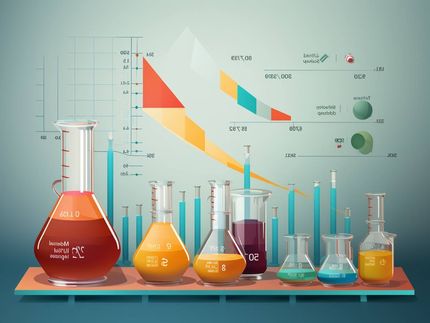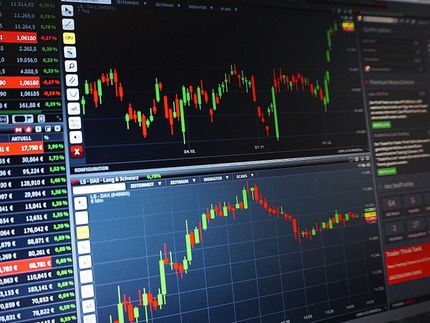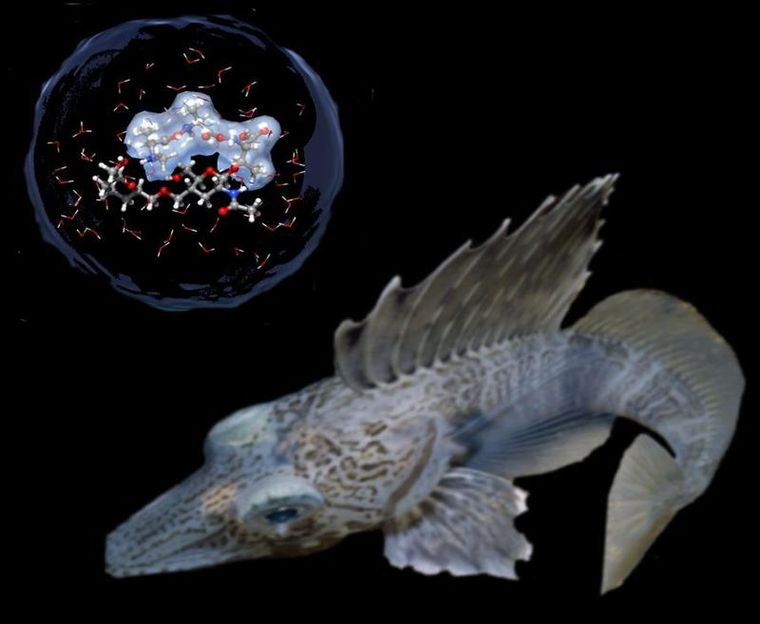WACKER Confirms Forecast of Higher Sales and EBITDA for Full-Year 2018
In Q3 2018, Wacker Chemie AG increased sales and EBITDA year over year in its chemical business. Group sales and EBITDA, though, were lower on balance than last year, given the challenging market environment for solar silicon. The Munich-based chemical company posted sales of €1,242.7 million for the quarter (Q3 2017: €1,311.6 million). That was a decline of 5 per¬cent compared with a year ago, mainly due to markedly lower volumes and lower average prices for solar silicon. The decrease was not fully offset by chemical business, which achieved better prices, positive product-mix effects and higher silicone volumes for specialties. Changes in exchange rates had only a marginal impact on the year-over-year sales trend. WACKER generated EBITDA of €241.7 million in Q3 2018. That was 19 percent below last year (€298.0 million). Alongside lower sales, one of the main factors slowing earnings was the marked rise in raw-material costs.
Relative to a quarter ago (€1,329.9 million), sales were down 7 percent amid lower volumes, due especially to the current market weakness for solar business. EBITDA also fell 7 percent versus a quarter ago (€260.5 million). WACKER’s EBITDA margin from July through September 2018 was 19.4 percent (Q3 2017: 22.7 percent). In the preceding quarter, it was 19.6 percent.
In Q3 2018, Group earnings before interest and taxes (EBIT) amounted to €106.5 million (Q3 2017: €155.3 million), yielding an EBIT margin of 8.6 percent (Q3 2017: 11.8 percent). Net income for the quarter amounted to €68.9 million (Q3 2017: €104.2 million) and earnings per share came in at €1.31 (Q3 2017: €2.04).
WACKER confirmed its sales and EBITDA guidance for full-year 2018. The company continues to expect Group sales for 2018 to grow by a low-single-digit percentage versus the same period last year (€4,924.2 million). EBITDA is likely to rise by a mid-single-digit percentage compared with last year (€1,014.1 million). WACKER expects net income from continuing operations to rise markedly.
“Our performance in Q3 reflected different trends,” said CEO Rudolf Staudigl in Munich on Thursday. “On the one hand, our chemical divisions delivered strong overall growth, increasing their total sales and EBITDA year over year. WACKER POLYSILICON, on the other hand, experienced far more difficult market conditions. Overall, WACKER’s prospects remain positive for this year and beyond. Our chemical business is developing strongly and photovoltaics, despite the market’s temporary weakness, is as promising as ever – not least because of the global climate-policy challenges. As a result, we continue to expect full-year Group sales and EBITDA to grow in 2018.”
Regions
In Q3 2018, WACKER continued expanding its sales in every region except for Asia. Sales there declined 24 percent to €407.8 million (Q3 2017: €536.4 million) due to lower polysilicon volumes. Sales in Europe reached €542.4 million, up 6 percent versus last year’s €511.5 million. In the Americas, sales climbed to €232.0 million (Q3 2017: €207.0 mil-lion), an increase of 12 percent.
Capital Expenditures and Net Cash Flow
In Q3 2018, the Group’s capital expenditures came in at €121.6 million (Q3 2017: €74.9 million), a year-over-year increase of 62 percent. The funds went mainly toward expanding capacity for silicone and polymer products.
At €13.2 million, net cash flow was slightly positive in Q3 2018 (Q3 2017: €205.3 million). This substantial year-over-year decline was mainly prompted by markedly higher cash outflows for capital expendi-tures, the repair and ramp-up costs at WACKER’s Charleston site, and an increase in working capital.
Employees
WACKER’s global workforce edged up in the reporting quarter. The Group had 14,407 employees on September 30, 2018 (June 30, 2018: 14,270). At the end of the reporting quarter, 10,232 employees (June 30, 2018: 10,156) worked at WACKER sites in Germany and 4,175 (June 30, 2018: 4,114) at international locations.
Business Divisions
In Q3 2018, WACKER SILICONES generated total sales of €634.9 mil-lion (Q3 2017: €559.3 million), an increase of 14 percent. That growth was driven not only by better prices, but also by higher volumes for specialties and, thus, an enhanced product mix. Compared with a quarter ago (€653.8 million), sales were down 3 percent, partly due to seasonal factors. The division’s EBITDA reached €173.4 million in the reporting quarter, 36 percent higher than last year (€128.0 million). Relative to a quarter ago (€176.6 million), EBITDA fell 2 percent amid slower sales. The EBITDA margin for Q3 2018 improved to 27.3 per-cent, from 22.9 percent in Q3 2017 and 27.0 percent a quarter ago.
Sales at WACKER POLYMERS totaled €338.8 million in the reporting quarter, 7 percent higher than a year ago (€317.9 million). The increase stemmed from volume growth and better prices. Relative to the preceding quarter (€343.1 million), sales were down 1 percent. This slight decline was mainly due to somewhat lower volumes amid seasonally weaker demand. EBITDA at WACKER POLYMERS amounted to €46.9 million in Q3 2018 (Q3 2017: €57.0 million). This 18 percent decline stemmed mainly from substantially higher raw-material costs. To counter this development, the division is raising the prices of its products. Compared with a quarter ago (€32.6 million), EBITDA climbed 44 percent. The preceding quarter’s EBITDA was dampened by the effects of a scheduled plant shutdown. In addition, somewhat better prices overall and high plant utilization rates had a positive effect on reporting-quarter EBITDA. The EBITDA margin was 13.8 percent in Q3 2018, after 17.9 percent a year ago and 9.5 percent in the preceding quarter.
WACKER BIOSOLUTIONS reported total sales of €57.3 million in Q3 2018. That was 8 percent higher than a year ago (€53.2 million) and on par with a quarter ago (€57.2 million). The year-over-year gain mainly reflected volume growth and better prices for some products. WACKER BIOSOLUTIONS’ reporting-quarter EBITDA was €6.0 mil-lion, 42 percent below a year earlier (€10.3 million). Reasons for the decrease included not only higher raw-material costs, but also integra-tion costs at the new Dutch biologics plant and the currently low utili-zation rates there. Versus a quarter ago (€5.4 million), though, EBITDA was up 11 percent. The EBITDA margin was 10.5 percent, after 19.4 percent a year ago and 9.4 percent in Q2 2018.
WACKER POLYSILICON generated total sales of €173.5 million in the reporting quarter. That was 49 percent below the year-earlier figure (€341.7 million) and 28 percent less than a quarter ago (€242.1 mil¬lion). This marked decline was due mainly to substantially reduced volumes and lower average prices for polysilicon. China’s early-June announcement that it was curbing solar feed-in tariffs and capping the amount of new photovoltaic installations for the current year slowed demand for solar modules. This, in turn, impacted the reporting-quarter price level for solar silicon, which was significantly lower, both year over year and quarter over quarter. WACKER POLYSILICON used the market situation for inventory rebuilding, which will allow it to supply customers promptly once demand and prices have picked up. EBITDA at WACKER POLYSILICON came in at €4.3 million in the quarter, sub-stantially lower than both a year ago (€85.0 million) and a quarter ago (€39.1 million). Alongside the impact of lower sales, earnings were also dampened by the ramp-up costs at Charleston. The division’s EBITDA margin for the July-through-September quarter was 2.5 percent, after 24.9 percent in Q3 2017 and 16.2 percent in Q2 2018.
Outlook
On balance, our statements on the Group’s full-year outlook made in the Interim Report on the 2nd Quarter have not changed. The company confirms its expectations that both sales and EBITDA will grow year over year.
Our projections for the individual divisions have changed as follows:
Amid robust customer demand and better prices, WACKER SILICONES anticipates lifting its full-year EBITDA somewhat higher than projected on publication of the Interim Report for Q2 2018. Its EBITDA will probably be slightly over €600 million (Q2 2018: around €600 million). Our projections for the division’s full-year sales remain in the region of €2.5 billion.
At the start of June, the Chinese government reduced some solar feed-in tariffs and revised grid policies for solar installations. In the short term, that will weigh on solar-silicon volumes and prices at WACKER POLYSILICON, with a likely year-over-year decline of around 25 per-cent in the division’s full-year sales and EBITDA (Q2 2018: low-double-digit percentage decrease in sales, with EBITDA down around 10 per-cent).
WACKER POLYMERS continues to expect full-year sales to rise by a mid-single-digit percentage, with EBITDA at around €150 million.
WACKER reaffirm the forecasts made in the 2017 Annual Report and the Interim Report for Q2 2018 regarding the Group’s key performance indicators. Group sales are projected to rise by a low-single-digit percentage. EBITDA should increase by a mid-single-digit percentage versus last year. WACKER expects its EBITDA margin to be slightly higher than a year ago. At around €550 million, depreciation will be significantly lower than last year’s level. WACKER expects Group net income from continuing operations to rise markedly. According to current estimates, the Group’s full-year capital expenditures will come in at around €450 million. Net cash flow is forecast to be clearly positive, but substantially below last year’s figure, due to higher investment spending. Net financial debt is expected to amount to around €500 million by year-end 2018.






























































